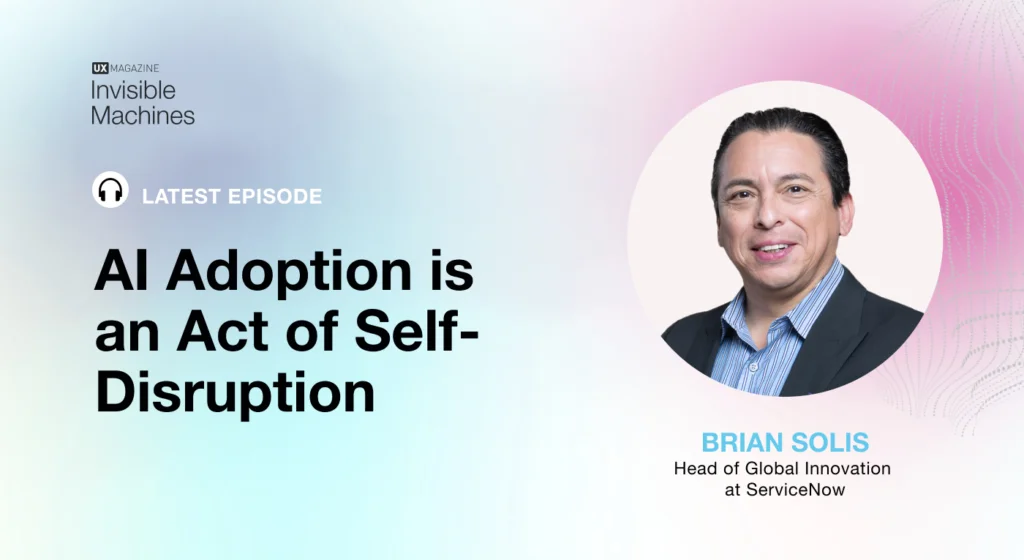Unlike other roles in a startup or middle-sized tech company, the role of the UX designer is still unclear to many. Such is the newness of the field that you might very well be the first UX designer employed by your new firm.
If you’re a new recruit at a startup, for example, your first challenge will be explaining your role to the rest of the team, as well as the value you will be bringing to the company in terms of increased conversions, customer retention and repeat visits to your site.
Not only will you likely find some confusion over what your role in the team will be, but also around what UX design is, and in particular how it differs from graphic design, UI design and web development.
This post aims to show you how to talk about UX design with your new team, as well as how to explain your role and the role of UX to your team in layman’s terms.
What is UX?
It’s obvious to you, right? You’re a UX designer– you live, eat and breathe UX design (and your friends probably do too). However, if you’re moving to a new company as their first UX designer, you’ll have some explaining to do. Your job will probably seem mysterious at first (“Wait, you don’t make graphics?”) and confusing at best (“Why is the new designer interviewing people?”)
UX design is a still a relatively new field, with many companies only just waking up to the fact that they need you on the payroll if they want to succeed in attracting and retaining customers.
Part of the confusion could lie in the name: UX design. For many people, the word “design” is associated with creativity, colors and graphics, when really its true definition lies in functionality, as well as the process behind making products that work well for the people who use them.
Knowing who the target customers are, and how to make their experience with your product the most rewarding or “delightful” it can be, is the responsibility of the UX design team. As such, functionality and “usability” should rank high in your list of priorities for your product.
How to explain this to your team
A UX designer wants their users to reach their goals, or allow users to get what they came for and in the easiest and most pleasurable way possible. First, that means knowing who the people are who want to use your product or who use similar products (which you can discover via user research) so their needs and expectations can be catered to.
Next, the UX designer is concerned with making it as easy as possible for these people to reach their goal (all of which incorporates usability, information architecture, intuitive navigability, testing). Once this is achieved, the business goals of the site are also achieved – the customer buys the product or shares their email. Simple, right?
What is UX design?
Brave (and honest!) members of your new team may approach you with this question. Have your answer on the tip of your tongue the next time one of your colleagues asks you:
“The process of enhancing user satisfaction by improving the usability, accessibility, and pleasure provided in the interaction between the user and the product.” –Wikipedia
You might want to put this into the context of what you do, and simplify the terms a little bit. For example:
“UX design is about making the user’s experience with the product the best it can be. We want to make sure we attract people to our site who are interested in this kind of product, and then, once they are here, make their journey from the home page to purchasing the product as easy and fun as possible.”
If they have further questions, you can point them in the direction of the following publications and influencers, where they can dig a bit deeper into these concepts.
What does the role of the UX designer involve?
Explaining how you bring about such impressive results for the company can be harder than defining UX design itself. What can help when talking about your role, however, is explaining your process. This is something that can help other team members understand what you do, but it also means they can quickly identify in which areas their expertise might be required, or where you might be collaborating with them.
A commonly used UX design process might look like this:
User Research
User research is every UX designer’s starting point for a product design. Research teaches us about the users, their behavior, goals, motivations, and needs. It also shows us how they currently navigate our system (or similar systems), where they come up against any difficulties and, most importantly, how they feel when interacting with this kind of product.
How is user research carried out?
- Interviews– Usually a one-on- one chat in person or Skype session with a user to establish their goals and needs. Great for getting in-depth knowledge of how a person thinks or feels about your product.
- Online surveys– strong>This method allows you to collate a vast amount of data on specific themes from many different users.
- Persona (creation)–strong> A target persona is not a real person, but a fake character who has many of the traits of many of your users. A persona of your usual customer can be created once enough evidence has been gathered from real users. Using this persona you can more easily imagine how your users think and behave when you’re designing your product.
- User testing (when improving a pre-existing product)– strong>You can get a very good idea of their user experience through observation and interviewing users while they interact with your product. It can help to get them to say the actions they’re performing aloud while they are doing them, so you can get an insight into their thought processes.
Design
The design of your product revolves around functionality and usability, rather than colors or pictures (these are established later by a visual designer). Having established during your user research what your users expect from your product or site, what their goals are and how they like to operate a system, it is functionality and usability that always come first.
What’s involved in the design?
- Information architecture– This addresses the hierarchy of the content on the page, mainly what is most important for the user to see and when. For example, most users expect a search bar to be at the top of the page. Because of this expectation, many companies keep their search bar at the top of the page.
- Wireframing– Wireframing is concerned with the user’s navigation through each page and between pages. It is a process which involves drawing a basic sketch of each page and deciding where the elements on that page should be so that the user flow is as smooth as possible.
- Prototyping– Using tools like InVisionApp, UX designers can create relatively quick (and even interactive) prototypes of the web pages they have already designed at the wireframing stage. This allows them to test the prototype with users before the design become fully implemented by the development team. Prototyping saves a lot of time and money if features need to be changed after testing.
User Testing
UX designers test because it allows them to improve upon the original product or site design and to see if the changes they made during the Design phase stand up to scrutiny.
What kind of processes are used to undertake testing?
- Usability testing– This is how UX designers evaluate the product by testing it on real users. It can be done through observing users interacting with the product, or asking them questions while they interact with it. It is the most effective way of understanding how well the product meets the user’s goals.
- Remote user testing– Similar to usability testing, remote user testing is when the testing does not take place in the same place as the UX designer but is done remotely, via Skype, screensharing or other online methods. Remote user testing can take place because the target user is located far away, costs need to be kept down, more user evidence is needed, etc.
- A/B testing– This is when users are sent two versions of the same page or product and the UX designer can see which of the two versions the user responds to better.
Implementation
Whether at a startup or more established company, you will be working intimately with developers to reach your end goal for a project. These programming wizards will be working to transform your design ideas into a real, working website. How you approach this relationship will determine the success or failure of your project.
Who will you be working with?
To give your team an idea of what they can expect, it’s a good idea to outline who on the team you’ll be working with:
- Project Manager– Outlines the goals of a project, timeline of execution, resources, budget.
- UI Designer– Designs the actual interface elements that the user interacts with to accomplish a goal within the site.
- Web Developer– Builds the site from the designs you’ve created, estimating what will and won’t be possible in the given timeline.
- Marketer– Passes crucial information about user personas over to the marketing team so they can produce content that attracts the people who want to buy your product.
What won’t you be doing?
Before you get asked to fix a bug on the website, it’s probably a good idea to be clear about what your job definitely does not involve. Reducing misunderstanding about your role now will save a lot of confusion later on. It will also reassure your colleagues that you won’t be stepping on their toes or taking over their projects.
A few things you might want to mention UX design does not cover:
- Graphic design
- Programming
- Content creation
- Customer service
What value will your role bring to the team?
If you’re not creating beautiful graphics or building fast-loading pages, what value will you really be bringing to the team? This is when you’ll need to explain what the results of your research, designing and testing will be.
- Increased conversion rates– User research will uncover solid user personas of your product. This means marketing, site and advertising content can be tailored to attract these personas, which will immediately increase the conversion rate of potential customers becoming customers because the people who are looking for your product are coming to you to get it, rather than to your competitors.
- Customer retention– When a user can quickly and easily reach their goals on your site, they will come back again and again. Why would they go to another site when your site understands their behavior and makes their navigation and interaction so smooth and enjoyable? They get what they want and in the most delightful way possible– of course they’re going to stay.
- Customer recommendation–There are few things more valuable to a company than a customer recommending their services, and happy customers naturally recommend a company to their friends. A great user experience will ensure your customers want to tell everybody they know about it; it’s the best advertising you could ask for.
Do you have any experience of de-mystifying UX design to a new colleague or company? We’d love to hear your thoughts on this in the comment section below.
If you’re think about becoming a UX designer, check out the CareerFoundry UX Design Course, aimed at beginners to launch them into their first professional gigs in the field.







